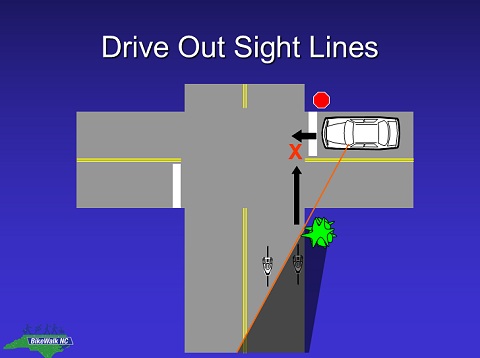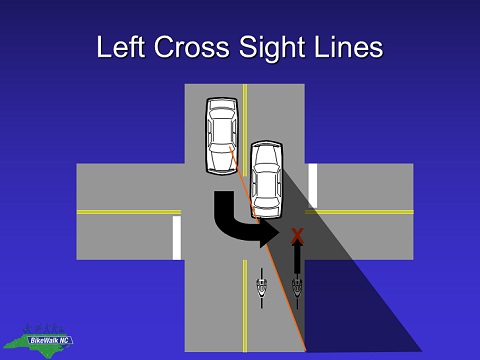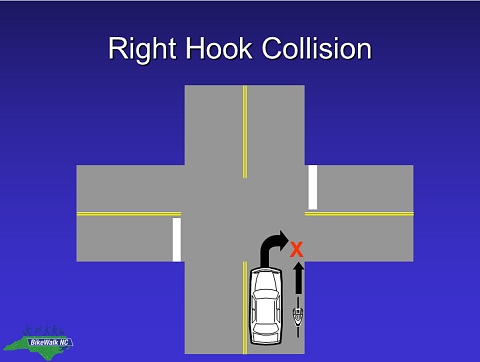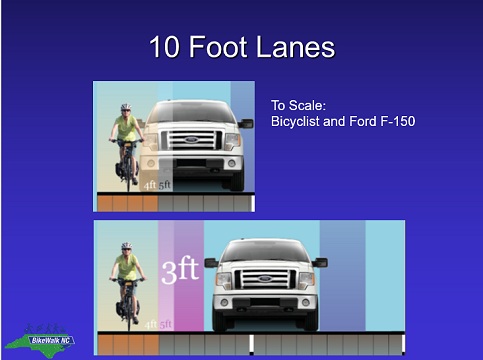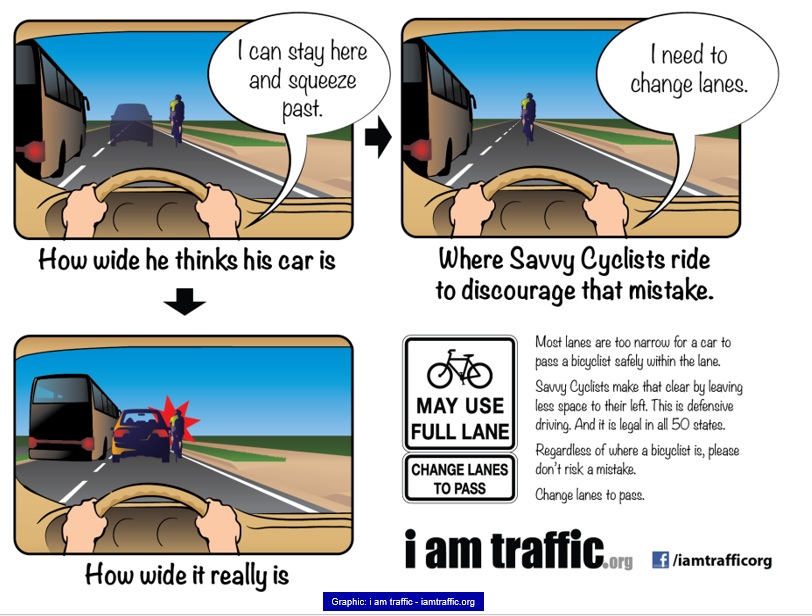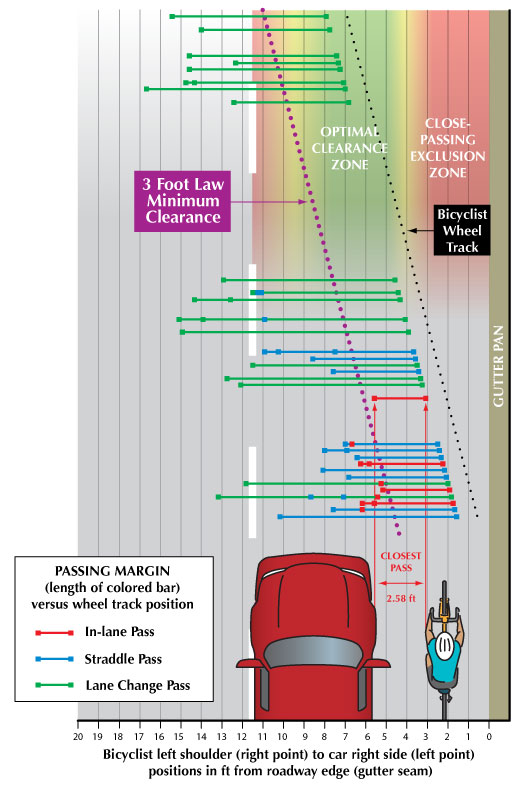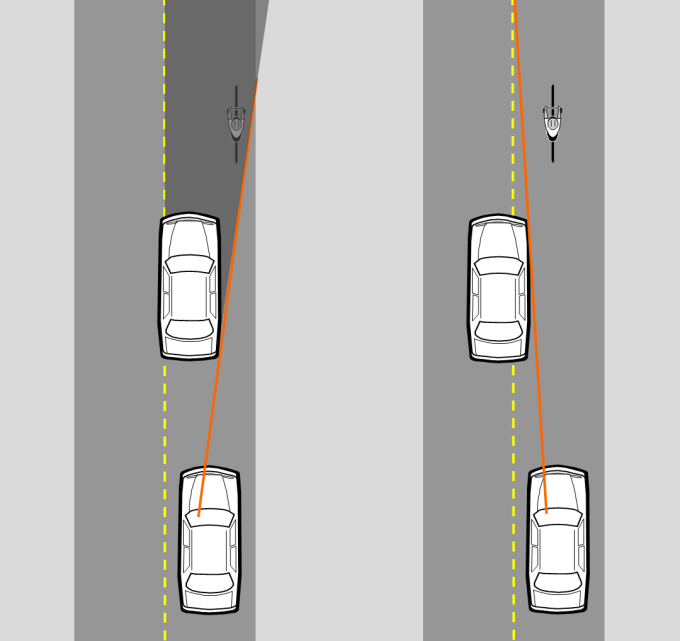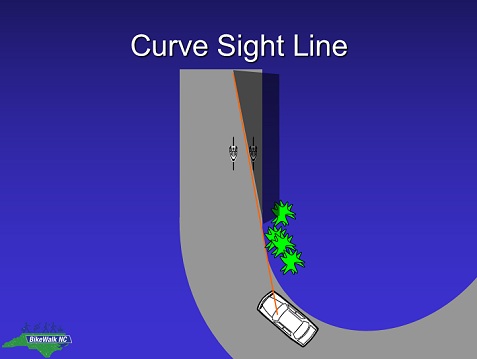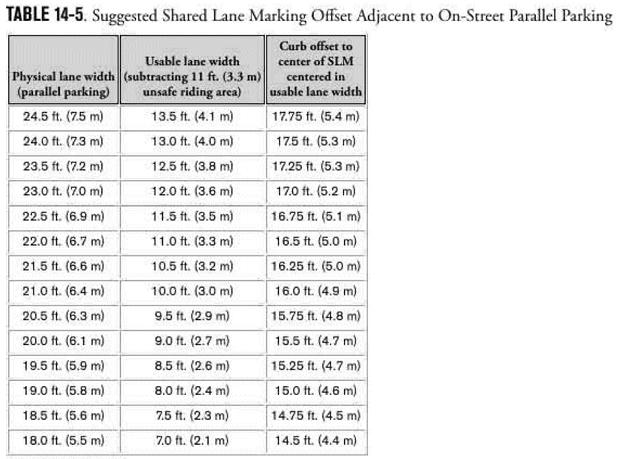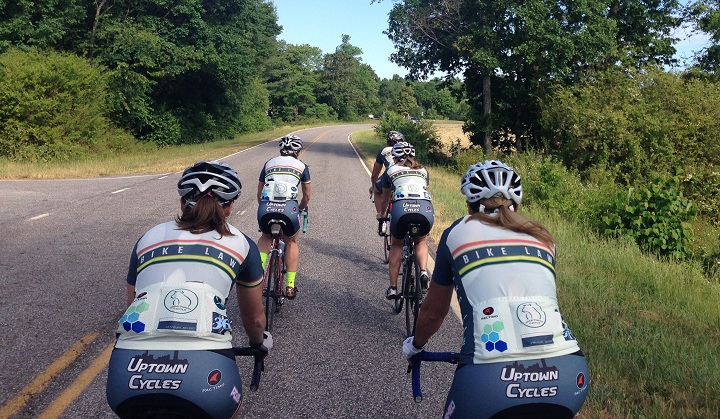
BikeWalk NC has released the first part of its education initiative to promote best practices for group bicycling. The first installment, Skills and Techniques, is now available as an online guide. It covers cooperative bicycling, applicable traffic laws, group size and formation tradeoffs, paceline techniques, and safe negotiation of intersections and road hazards. Future releases will include Part II: Organization and Leadership, and additional media formats such as handouts, cards, and videos.
The objective of BikeWalk NC’s group bicycling best practices project is to inform cyclists, police, traffic engineers, transportation planners, motorists and legislators of safe and effective practices for group travel by bicycle. Our intent is to improve the safety and comfort of group rides and to use greater public knowledge to discourage onerous and even dangerous regulatory legislation and enforcement being proposed by those who do not understand group bicycling. This project is a collaborative effort of highly experienced group ride leaders, organizers and participants from across the state. Special thanks go to the Carolina Tarwheels, the North Carolina Bicycle Club, Bike Law North Carolina, WeeklyRides.com and The Peloton Project for their contributions to Part I.
For more education and enforcement resources on bicycling, see our Learn page.
